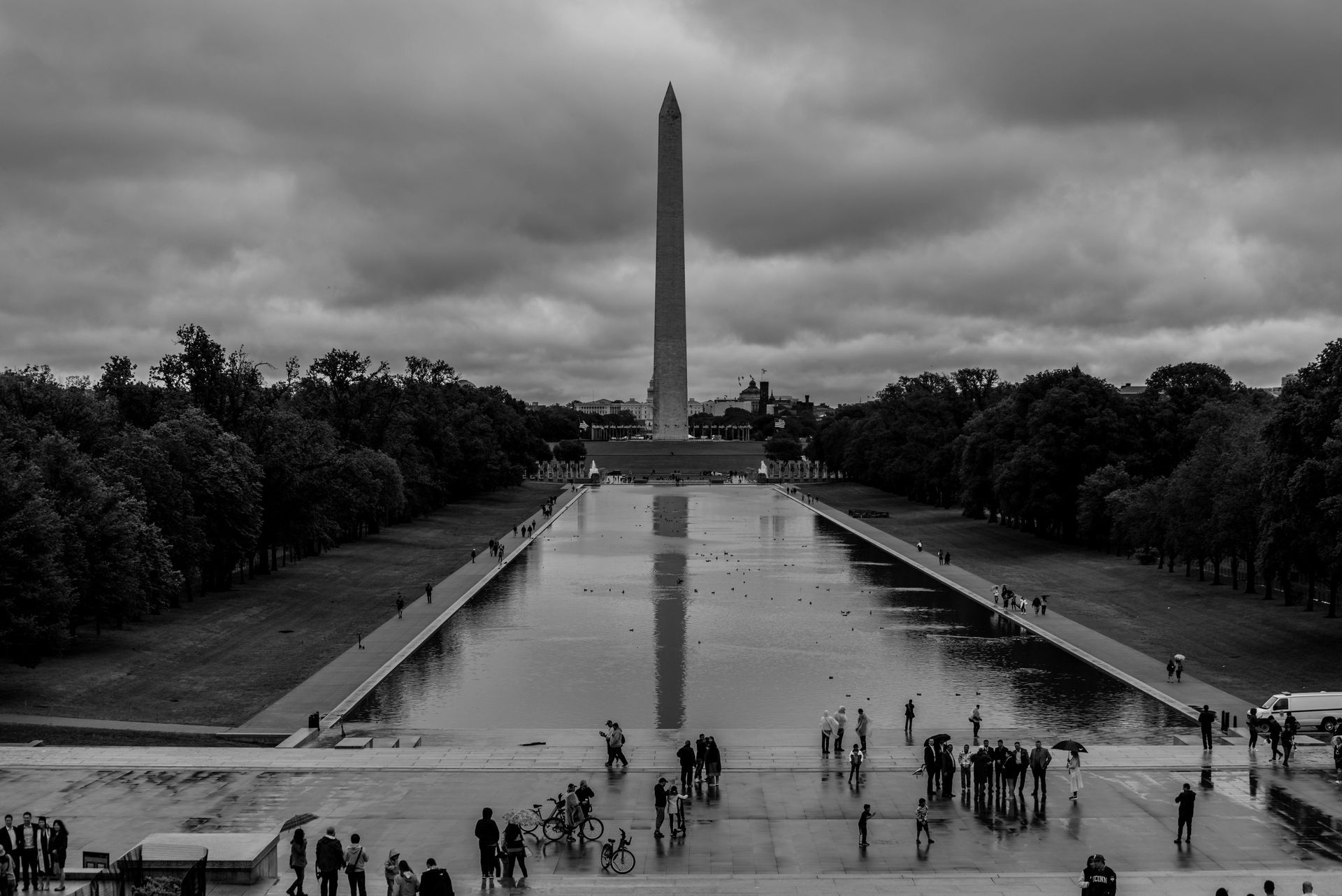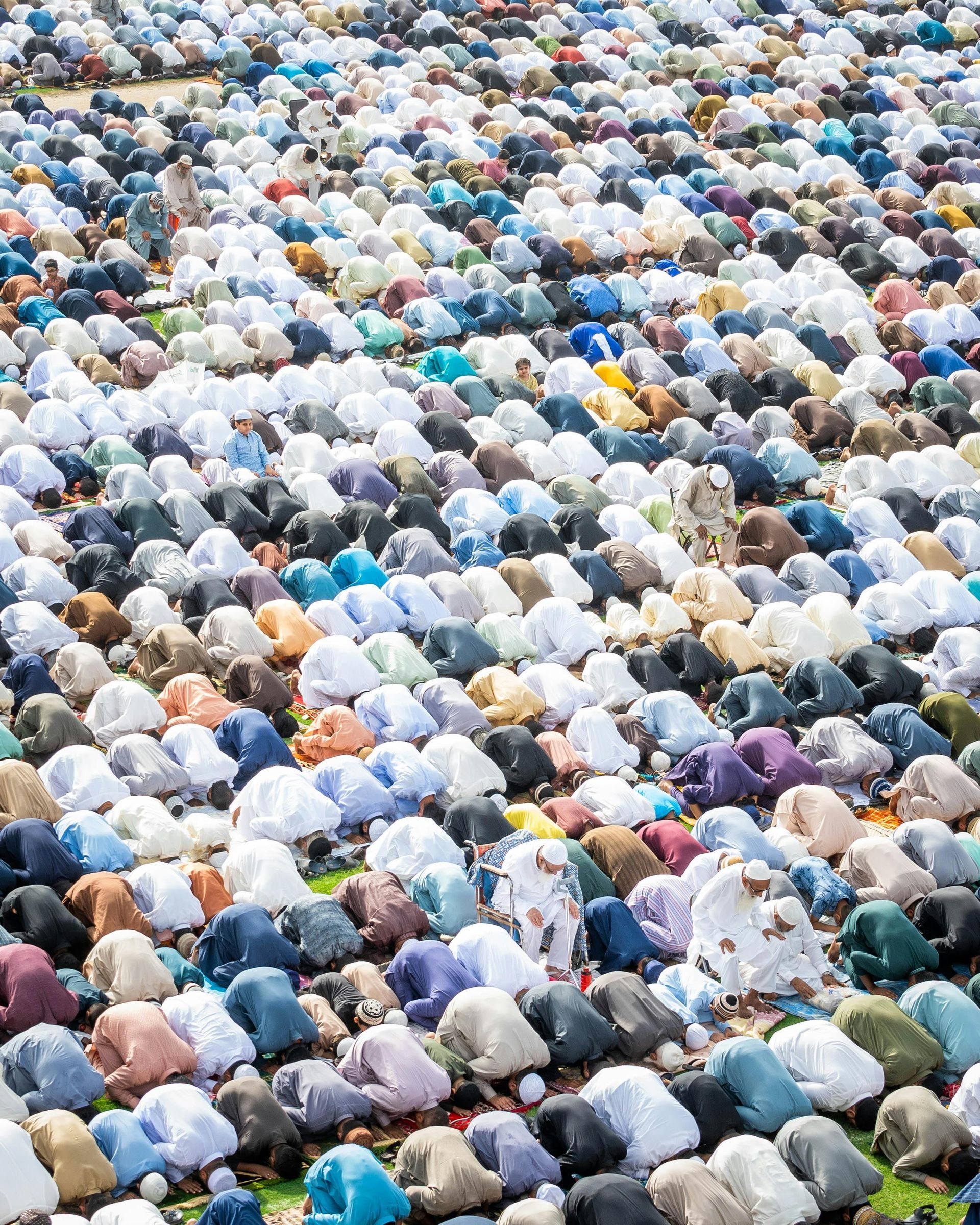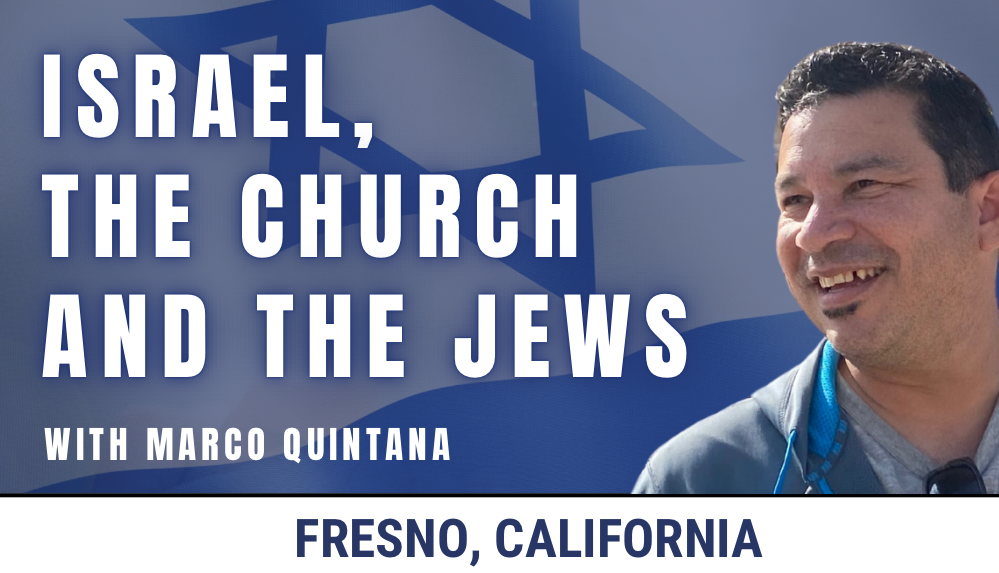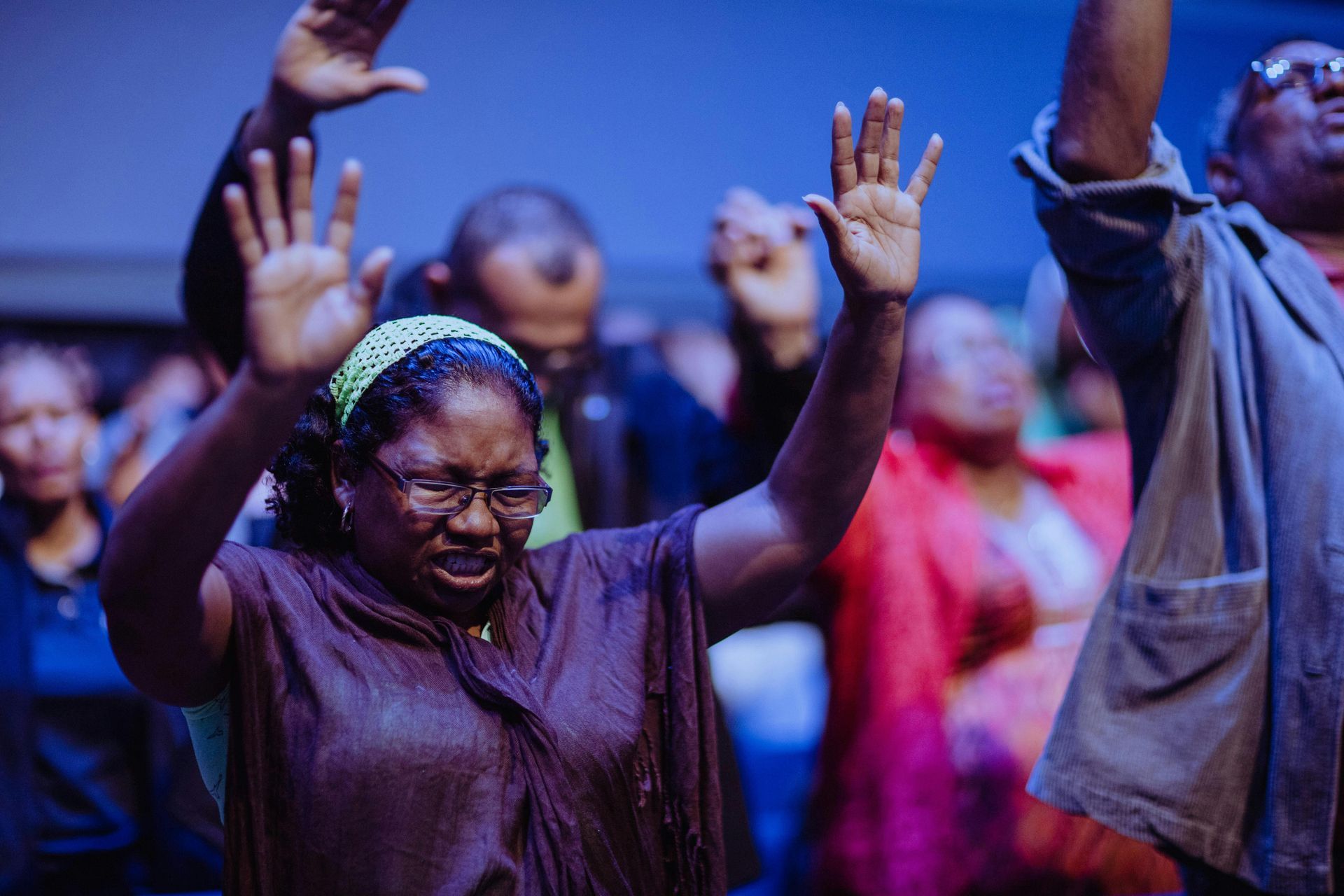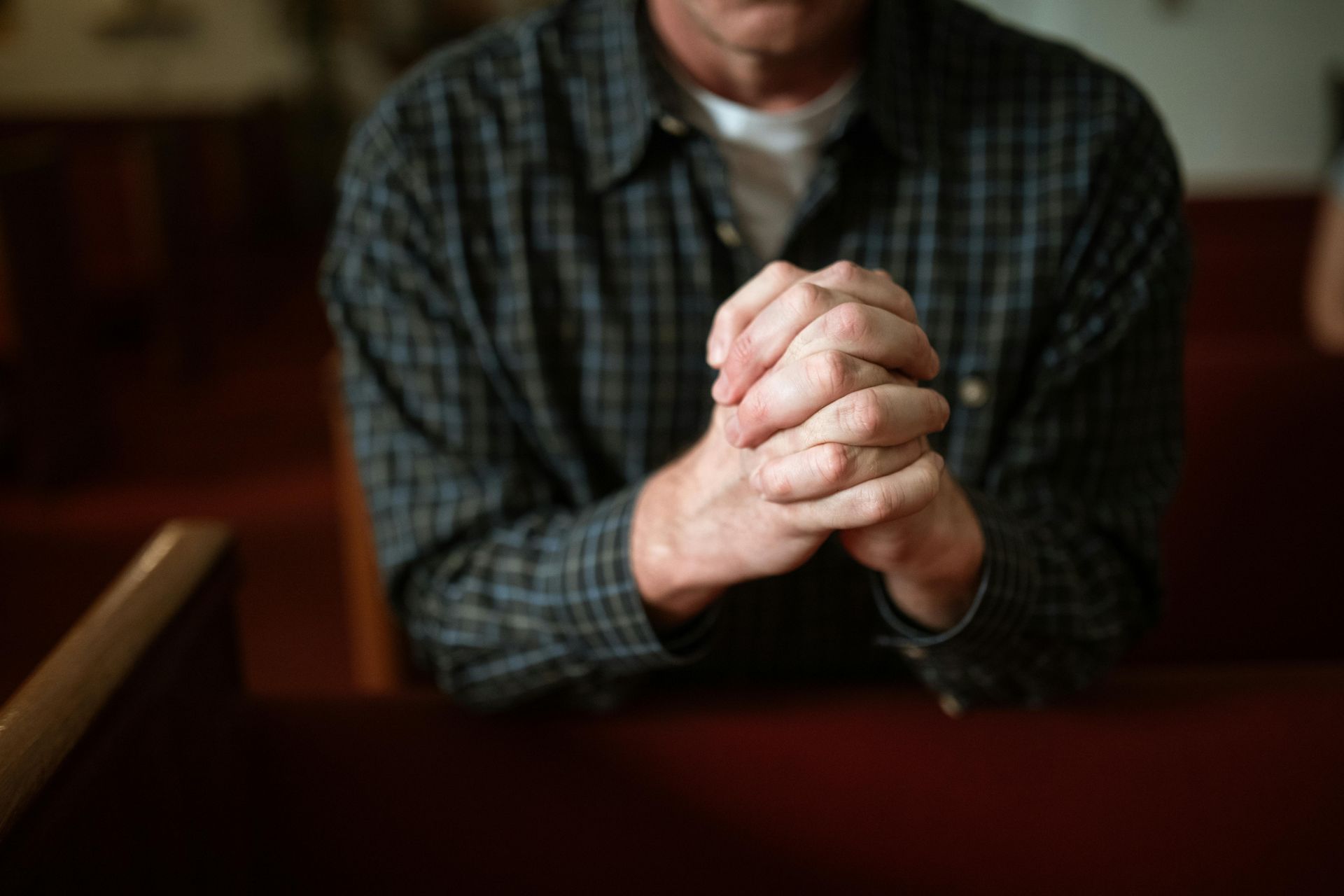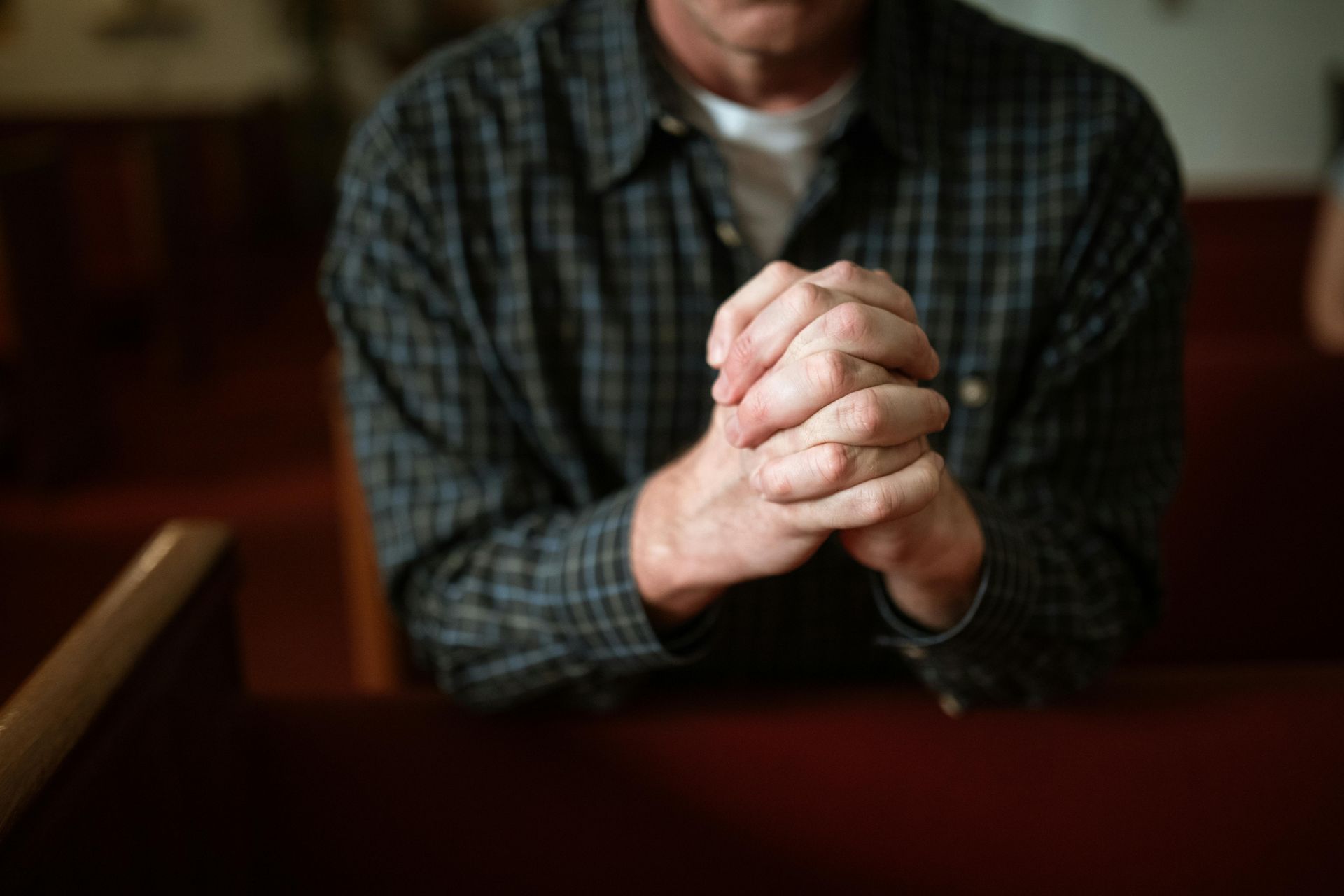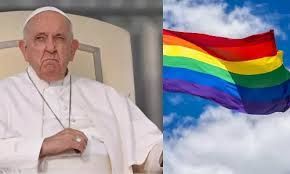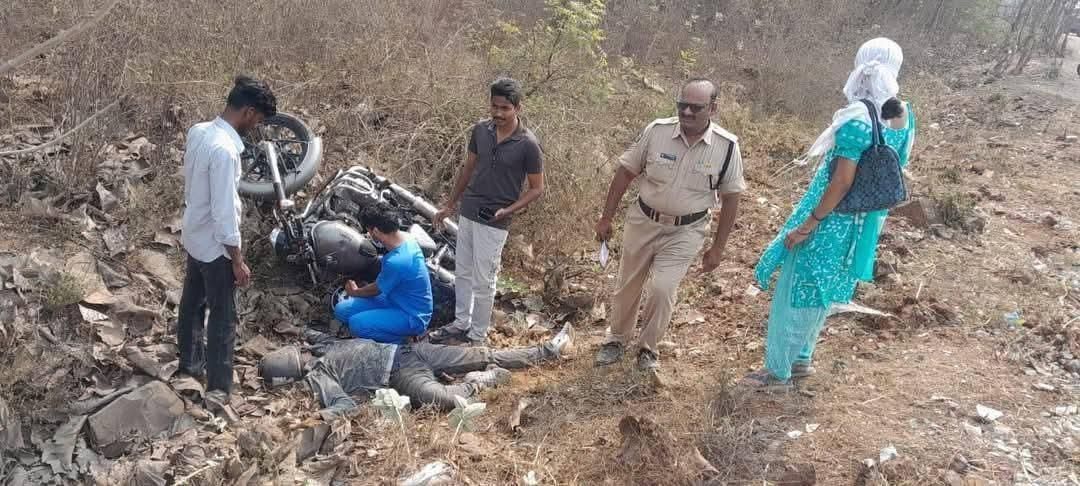Yoma: Die Dag Van Versoening
Luk. 4:14-30: “En Jesus het in die krag van die Gees na Galiléa teruggekeer, en daar het 'n gerug aangaande Hom deur die hele omtrek uitgegaan; en Hy het in hulle sinagoges geleer en is deur almal geprys.
[Hy was ‘n rondreisende rabbi]. Toe kom Hy in Násaret waar Hy opgevoed was; en soos Hy gewoond was, gaan Hy op die sabbatdag in die sinagoge en staan op om te lees. En die boek van die profeet Jesaja is aan Hom oorhandig; en toe Hy die boek oopmaak, kry Hy die plek waar geskrywe is:[Hy lees uit Jesaja 61, eintlik was dit ‘n boekrol, ‘n ‘megillah,” nie ‘n kodeks of ‘n boek nie.] Die Gees van die Here is op My, omdat Hy My gesalf het om die evangelie aan die armes te bring. Hy het My gestuur om die wat verbryseld van hart is, te genees; om aan gevangenes vrylating te verkondig en aan blindes herstel van gesig; om die wat gebroke is, in vryheid weg te stuur; om die aangename jaar van die Here aan te kondig. En nadat Hy die boek toegemaak [Hy het die rol opgerol]en aan die dienaar teruggegee het, gaan Hy sit, en die oë van almal in die sinagoge was op Hom gevestig.
Toe begin Hy vir hulle te sê: Vandag is hierdie Skrif in julle ore vervul. En almal het vir Hom getuienis gegee en was verwonderd oor die aangename woorde wat uit sy mond kom; en hulle sê: Is Hy nie die seun van Josef nie? En Hy antwoord hulle: Julle sal My ongetwyfeld hierdie spreekwoord toevoeg: Geneesheer, genees uself!
Alles wat ons hoor wat in Kapérnaüm gebeur het, doen dit hier in u vaderstad ook.
En Hy sê: Voorwaar Ek sê vir julle, geen profeet is aangenaam in sy vaderland nie. Maar Ek sê vir julle met waarheid, daar was baie weduwees in Israel in die dae van Elía toe die hemel toegesluit was drie jaar en ses maande lank, toe daar 'n groot hongersnood gekom het in die hele land, en na nie een van hulle is Elía gestuur nie, behalwe na Sarfat [Wat te doen het met reiniging deur vuur- in Hebreeus]in Sidon, na 'n weduwee. En daar was baie melaatses in Israel in die tyd van Elísa, die profeet, en nie een van hulle is gereinig nie, behalwe Naäman, die Síriër.
En almal in die sinagoge is met woede vervul toe hulle dit hoor; en hulle het opgestaan en Hom uit die stad uitgedryf en Hom gebring tot op die rand van die berg waarop hulle stad gebou was, om Hom van die krans af te gooi. Maar Hy het tussen hulle deur geloop en weggegaan.”
Jesus kom in die sinagoge en Hy sien sekere dinge wat na Hom verwys soos na Hom as die Seun van Josef en op ander plekke waar Hy geken word as die “Seun van Dawid” en hier in die dorp waarin Hy groot geword het, word Hy geken as die Seun van Josef. Nou, baie van julle ken Jesus as “HaMashiach ben Yosef,” en HaMashiach ben David,” “Messias die Seun van Josef en Messias die Seun van Dawid.”
Ons moet onthou dat Josef deur die Heidene aanvaar was terwyl sy Joodse broeders hom verwerp het.
Hy was in sy eie land deur sy Joodse broers verwerp maar deur die heidene aanvaar.
So, dit is hier waar hulle Jesus begin ken het as die “Seun van Josef” waar Hy twee verhale vertel het oor Elia en Elisa wat deur die Heidene aanvaar is maar wat deur die Hebreërse mense verwerp was. Jesus vergelyk Homself met hulle en die mense raak ongemaklik, maar Sy woorde was aangenaam, maar nadat Hy hulle die waarheid oor Hom vertel het was Sy woorde nie meer so aangenaam nie. Toe hulle eers uitgevind het waar Hy regtig vandaan kom was hulle verontwaardig en woedend. Vandag is dit dieselfde. Jy kan ‘n goeie Evangeliese boodskap bring of ‘n goeie lering bedien maar wanneer jy begin praat oor die verkeerde dinge in die kerk of wat verkeerd is met hulle, dan gaan hierdie selfde mense baie vinnig teen jou draai soos teen ‘n rot met hondsdolheid. Nou wat hier in Nasaret gebeur het was ‘n voorbeeld van wat met Hom in Jerusalem gaan gebeur na die triomferende inkoms. Jesus vergelyk Homself met Elia en Elisa en wat met hulle gebeur het. Die drie en ‘n halwe jaar wat genoem word, drie jaar en 6 maande, plaas die gebeure in ‘n eskatologiese raamwerk.
Dit sê vir ons dat wat ookal hier op ‘n manier gebeur het- te doen het met die eindtyd,- die tyd, en tye en ‘n halwe tyd in Daniël en in Openbaring. Dit het te doen met die drie en halwe jaar aan die einde van die eeu, en ook die drie en ‘n halwe jaar eskatologies. Jesus se openbare bediening was drie en halwe jaar en Satan wil die selfde tyd hê wat hy gaan kry deur die Antichris. Die Antichris gaan probeer om die Wet en die tye te verander en dit sal in sy hand gegee word vir ‘n tyd- tye en ‘n halwe tyd.
Nou, daar is meer aan dit verbonde. Wanneer daar gepraat word van hierdie drie en halwe jaar in ‘n gegewe perikoop en in ‘n gegewe verhaal, dan het dit iets te doen met ‘n toekomstige eskatologiese toepassing. Dit gaan nie net oor wat gister gebeur het nie. Maar dan sal ons moet deel met hierdie vraag, hoekom het Jesus die boekrol op hierdie punt opgerol, of die Boek toegemaak. Kyk na die Boek Jesaja hoofstuk 61, die gedeelte waaruit Jesus gelees het:
Jes. 61 1: “Die Gees van die Here HERE is op My, omdat die HERE My gesalf het[Die woord wat hier vir “salf” gebruik word is waar die woord Mashiach, messiah vandaan kom.]- om 'n blye boodskap[Hierdie woord is basardie woord vir evangelie in Hebreeus, in Grieks in die Septuagent is dit- euaggelion] te bring aan die ootmoediges; Hy het My gestuur om te verbind die gebrokenes van hart, om vir die gevangenes 'n vrylating uit te roep en vir die geboeides opening van die gevangenis;...”
Toe Jesus die gedeelte in die sinagoge in Nasaret gelees het- het Hy net die eerste helfte van vers twee verse gelees. “--om uit te roep 'n jaar van die welbehae van die HERE.” Hy lees nie die res van die vers nie- “‘n dag van die wraak van onse God; en Hy rol die Boekrol toe, of maak die Boek toe. Hy gaan net die eerste helfte van die profesie met Sy eerste koms as die “seun van Josef” vervul, die een wat redding bring. Hy sal die tweede gedeelte van die Skrif vervul met Sy wederkoms: “DieDag van die Wraak van onse God;” Met Sy eerste kom het Hy gekom in genade en in Waarheid en om genade te betoon.
Met Sy tweede koms kom Hy met die oordeel van God, die wraak van God. Maar daar is ander voorlopers vir hierdie dinge. Kyk na die Boek van Sagaria 12:10:“Maar oor die huis van Dawid en oor die inwoners van Jerusalem sal Ek uitgiet die Gees van genade en smekinge; en hulle sal opsien na My vir wie hulle deurboor het, en hulle sal oor Hom rouklaag soos 'n mens rouklaag oor 'n enigste seun en bitterlik oor Hom ween soos 'n mens bitterlik ween oor 'n eersgebore kind.”
Kyk na die Evangelie van Johannes, die verhaal van die Geboorte 19:37:“En weer sê 'n ander Skrif: Hulle sal sien in wie hulle gesteek het”Letop net die eerste helfte van Skrif word aangehaal. Hoekom staan daar nie: “En hulle sal oor Hom rouklaag soos een wat treur oor ‘n enige gebore Seun?” Jesus vervul dit met Sy tweede koms. Kyk na Openbaring 1, dit sê vir ons direk:
Op 1:7: “Kyk, Hy kom met die wolke, en elke oog sal Hom sien, ook hulle wat Hom deursteek het; en al die geslagte van die aarde sal oor Hom rou bedryf; ja, amen!”
Hulle sal opkyk na Hom wat hulle deursteek het en oor Hom rou bedryf- met Sy tweede koms en nie met Sy eerste koms nie; hulle skree “Kruisig Hom.!” En die vers word in twee gedeel. Dit is hoe ons die Boek Daniël verklaar maar dit is net ‘n voorsmakie vir later.
Hulle neem Hom na Nasaret. Iets om te verstaan van Nasaret as jy nog nie daar was nie, as jy op beweeg van Nasaret af dan kry jy “illit” waar die oorspronklike Nasaret was. Nasaret is ‘n harde plek, dit is grootliks ‘n Arabiese gemeenskap. “Illit” is ‘n Joodse gemeenskap waar die rant van die gebergte is en jy sien dat dit direk die teenoorgestelde is van die noorde kant van die vallei van Armageddon, die vlakte van Jisreel teenoor Megiddo. Aan die suide kant is daar ‘n berg wat geken word as Migiddo, “Har Megiddo,”
Armageddon is egter nie ‘n berg nie. Die vallei word Jisreel noem. Aan die noorde kant, teenoor Megiddo is ‘n ander berg, Har Tabor- die berg Tabor waar die lied van Deborah plaasgevind het. Kyk na Rigters 5. In die Lied van Debora sien ons iets wat herhaal word in die Septuagint teks, die Griekse Ou Testament in die Magnificat, die loflied van Maria, en in die Lied van Deborah- Geseënd is u onder die vroue, u sal deur almal as geseënd genoem word.
Nou, Nasaret is waar Maria, Miriam as ‘n jong dogter gewoon het. Sy sou vanaf Nasaret na die berg Tabor oor gekyk het wat sy geken het en sy sou geweet het dat dit die plek was waar die verhaal van Debora afgespeel het. Dit is waar die verhaal van Jael ook plaasgevind het, waar die eer en die roem aan Sisera gegaan het, ons lees in Rigters 5:7: “--totdat ek, Debóra, opgestaan het, ek, 'n moeder in Israel, ” En dit gaan verder en ons lees van ‘n esel wat op gery word in vers 10, en hier word verskillende tale gebruik om geseënd te beskryf, “Geseënd is jy onder die vroue, hulle sal jou as geseënd noem.” Rigters 5:24: “Mag bo die vroue geseënd wees Jael,...” Min het Maria van Nasaret geweet dat die engel Gabriel eendag na haar toe sal kom met die woorde: “Geseënd is jy onder die vroue.”
Sy het in die skadu van die Berg Tabor opgegroei wat uitkyk oor Nasaret Illit. “Geseënd is jy onder die vroue.” Dit is waar dit gesê was, maar eendag sou dit ook vir haar gesê word, presies op dieselfde plek, dit is Nasaret. Aan die Ooste kant van Nasaret, en loodreg van die Vallei van Jisreel is ‘n styl berg hang en jy sal nie daarvan hou om daar af te gaan nie; daar is verskeie klowe en plato rante met styltes van meer as 45 grade.
Hoekom wou hulle Jesus van die afgrond afgooi? Hoekom wou hulle hom op hierdie manier probeer doodmaak? Hoekom wou hulle Hom nie stenig nie, hoekom wou hulle Hom spesifiek van die krans afgooi om Hom dood te maak? Maar belangrik, hulle kon Hom nie doodmaak nie. Hoekom was Hy beskerm?
Heel duidelik was dit nog nie Sy tyd om vir ons sonde te sterf nie? Kom ons kyk na Levitikus 16.
Die Dag van Versoening, Yom Kippur
Dit kom ooreen met die Hebreeuse woord “kapporah.” Kapporah beteken ‘n offer afgelei van die Hebreeuse woord “lehakreem”—dat die mens een met God sal wees. Die eenheid wat deur sonde verlore gegaan het sal herstel word wanneer die Messias kom. Onder die Wet sal die sonde van die Joodse mense vergewe word as hulle ‘n ware geloof en ‘n ware sonde belydenis gedoen het, die bloed van die Yom Kippur sondebok sal kappurahbring, dit sou hulle sonde tydelik bedek totdat die Messias kom en dit weg neem.
Dit is soos met ‘n tydelike bestuurs lissensie totdad jy die waardige lissensie kry. Dit bring kapporah, dit was ‘n tydelike bedekking. Die Ou Testamentiese heiliges kon nie hemel toe gaan totdat die Messias gekom het nie. Hulle het na Abraham se boesem toe gegaan waar hulle gewag totdat die Messias kom. Die Ou Testamentiese heiliges kon net deur die Bloed van Jesus gered word, dieselfde met ons. Daar is geen ander naam in die hemel waaronder ons gered kan word nie soos wat Hebreërs vir ons sê, die bloed van diere kan nie ons sonde afwas nie, hulle kon net kapporahmaak..
Dit was simbole van wat die Messias sou doen. Ons almal weet van die bloed van die Lam, maar met Yom Kippur is daar ook die bloed van die sondebok. Dit alles is die bloed van Jesus, maar die bloed van hierdie diere was op verskillende maniere werksaam. Al die diere offers in die Tempel, die bloed, is alles beelde van die bloed van Christus in verskillende aspekte, die bloed van die lam, die lam sonder gebreke, die onskuldige sou vir die skuldige sterf. Een mens sonder sonde is beter as al die mense met sonde, so kon een vir almal sterf; dit is die bloed van die lam. Dan is daar die bloed van die bulle, die sterke sou vir die swakke sterf, net soos wat die onskuldige vir die skuldige sou sterf. Die voëls, hulle moes die voels onder lopende water offer.
Dit is beeld van wassing met die bloed. Al hierdie dinge gee vir ons verskillende aspekte van die bloed van Jesus, maar die bloed van die bok het sy eie unieke gedeeltes. Wat is dit?
Wel een van die dinge is, in Grieks kry ons twee woorde vir sonde: “Hamartia” en “hamartano.” Hulle is amper dieselfde maar in Hebreeus is hierdie woorde, Heten pesha,heel verskillend.Hetbeteken om die doel te mis, om ‘n pyl te skiet wat die teiken mis. Peshabeteken om te vêr te gaan. Pesha is oortreding; Hetis om te faal. Pesha is die sonde wat te doen het met ‘n opdrag; Hetis die sonde van nalaat, om te versuim.
Ons sondig beide deurom dinge te doen wat ons nie moet doen nie, maar ons sondig ook om nie dinge te doen wat ons moet doen nie. Dink aan Koning Saul, sy eerste sonde was hy het dinge gedoen wat hy nie moes doen nie; hy het ‘n moordenaar van die Hoë Priester, Abithar geword, hy het betrokke geraak in die oproep van dooies en towery, die okkulte. Hy het probeer om Dawid dood te maak. Hy het begin om dinge te doen wat hy nie moes doen nie. Sy eerste sonde was hy het gefaal om dinge te doen wat hy moes doen, hy moes ontslae geraak het van Amalek, hy het van die buit vir homself gehou wat hy moes verbrand het; dit was vir ‘n heidense god gegee.
Wanneer iemand terugval, wegval van God af, dan gaan dit nie soseer oor iets wat ons doen nie maar oor iets wat ons doen wat ons nie moet doen nie, dit kom later. Dit begin gewoonlik oor wat ons doen en wat ons nie moet doen nie. Wanneer iemand se gebedslewe, Bybel lees, gemeenskap met ander gelowiges, getuienis- begin stil raak, wanneer ons ophou om die dinge te doen wat ons moet doen, dan is dit net ‘n kwessie van tyd vir ons ou natuur om oor te vat en vir ons om dinge te begin doen wat ons nie moet doen nie.
Die bloed van die lam het hoofsaaklik te doen met pesha terwyl die bloed van die bok meer te doen het met het.Die bloed van die lam is meer te doen met die dinge wat ons gedoen het voordat ons tot redding gekom het. Die bloed van die bok het meer te doen met dinge wat ons daarna gedoen het. Die bloed van Christus reinig ons van alle sonde, meer nog, peshahet te doen met bewustelike sonde. Het het te doen met sonde wat in Hebreeus geken word as “barut”- onwetenheid.
Heb. 9:7: “-maar in die tweede die hoëpriester alleen, een maal in die jaar, nie sonder bloed nie, wat hy offer vir homself en vir die sondes van die volk uit onwetendheid begaan ” [afgelei van Hebreeus- barut.]
Dit alles is die bloed van Jesus. Al hierdie diere is beelde van Christus maar Sy bloed is inwerkend op verskillende maniere. Die bloed van Christus reinig ons van alle sonde, die verlede en die hede. Ons moet verstaan dit is medewerkend op verskillende maniere. Dit is medewerkend in dinge wat ons doen wat ons nie moet doen nie, maar dit is ook medewerkend vir die dinge wat ons moes gedoen het maar nie gedoen het nie.
Dit is medewerkend vir die sonde wat ons onwetend doen, maar dit is ook medewerkend vir die dinge wat ons onwetend doen. Christene kan onwetend sondig, soos byvoorbeeld mense sal toelaat dat ongedoopte ongeredde kinders Nagmaal gebruik, dit is totaal verkeerd. Die Nagmaal is vir gedoopte weergebore Christene alleen. Ons sien in Eksodus dat ons ons kinders moet laat sien hoe ons die Nagmaal gebruik sodat hulle die vraag kan vra: “Hoekom doen julle dit?”Deurom kinders nie toe te laat om Nagmaal te bruik nie is ‘n manier om hulle te laat vra oor hulle redding.
Die Tafel van die Here is dalk ‘n beeld van onskuld vir wat dit beteken, nie dat dit die tafel deur ‘n immorele persoon verontreinig word nie, maar omdat dit verkeerd is. Hierdie kinders weet nie dat dit hulle sondig nie en dit is die ouers se verantwoordelikheid, maar die rigting wat die kerk nou in beweeg is heel waarskynlik onbekend vir die ouers. Maar dit is nogtans sonde en iemand moet betaal vir die sonde. Jesus betaal vir die sonde al is dit onwetend. Elke keer as ‘n Roomse Katoliek bid vir die dode dan is dit die sonde van towery, hulle sien dit nie so nie maar hulle roep geeste van dooies op. Dit is towery.
Nou, daar is ware gelowiges in die Roomse Katolieke Kerk, maar as hulle waarlik gered is dan sal die Heilige Gees hulle lei om onder hulle uit te kom. Niemand sal sê jy kan nie ‘n Roomse Katoliek en gered wees nie, maar as jy ‘n Katoliek is wat gered is dan kan jy nie in hierdie Kerk bly nie, maar nog steed reinig die bloed ons van alle sonde, al is dit sonde wat onwetend gedoen is.
Elke keer wat ‘n Roomse Katoliek vir die dooies bid of hom uitstrek voor transubstansiële elemente, dan is dit die sonde van afgodery. Dit is ‘n sonde wat deur baie onwetend gedoen word. Ons almal het die bloed van die Lam nodig. “Is jy gewas in die Bloed van die Lam?” Dit is waar, maar wat ook baie waar is, is dat ons ook in die bloed van bok gewas moet word. Die vraag dan, waarom, soos dit is, is daar twee bloed versoening feeste, Paasfees in die Lente en Yom Kippur in die herfs? Hoekom twee?, dit is ‘n belangrike vraag.
Onthou, Jesus vervul die heilige Lente dae met Sy eerste koms, Hy vervul die Herfs heilige dae met Sy tweede koms. Die herfs heilige dae is net gedeeltelik vervul met Sy eerste koms. Hy het Paasfees, Eerste Vrugte vervul toe Hy uit die dood opgestaan het, en Weke, wat Pinkster is, met sy eerste koms en dan is daar die somer wat ooreenstem met die Tye van die Nasies, die tydperk tussen die 69ste en 70ste week van Daniël.
Maar dan is daar Basuine, daar is Yom Kippur, Versoening, en dan is daar Tabernakels, of Hutte fees. Nou. Daar is ‘n gedeeltelike vervulling van hierdie heilige dae in Sy eerste koms. Toe Jesus gesterf het, het Hy Yom Kippur gedeeltelik vervul. Hy is ons Hoë Priester wat die perfekte versoening gebring het. Die Tempel se voorhangsel het geskeur. Sondige mense is nie langer geskei van ‘n Helige God nie, dit het Jesus gedeeltelik vervul, en hoe Hy dit vervul is soos volg. Tabernakels is gedeeltelik vervul in Johannes 7, maar die volle vervulling van Esegiël 47 vind plaas in die Millennium. Sagaria 14 sê vir ons dat Jesus in die Millennium in Jerusalem aanbid gaan word. Hy vervul die Lente feeste met Sy eerste koms maar die herfs feeste is net tydelik vervul met Sy eerste koms, dit sal vervul word met Sy tweede koms. Yom Kippur, die Dag van Versoening het ‘n toekomstige betekenis.
Daar was twee bokke.
Lev. 16:1-10: “En die HERE het met Moses gespreek ná die dood van die twee seuns van Aäron, wat gesterf het toe hulle voor die aangesig van die HERE nader gekom het; en die HERE het aan Moses gesê: Spreek met jou broer Aäron dat hy nie te eniger tyd moet ingaan in die heiligdom nie, binnekant die voorhangsel, voor die versoendeksel wat op die ark is, sodat hy nie sterwe nie; want Ek verskyn in die wolk op die versoendeksel.
Hiermee moet Aäron in die heiligdom ingaan: met 'n jong bul as sondoffer en 'n ram as brandoffer. Hy moet 'n heilige linnerok aantrek en 'n linnebroek moet oor sy vlees wees en met 'n linnegordel moet hy hom gord en 'n linnetulband moet op sy hoof wees. Dit is heilige klere; en hy moet sy liggaam in die water bad en dit aantrek. En van die vergadering van die kinders van Israel moet hy twee bokramme as sondoffer en een ram as brandoffer neem.
Dan moet Aäron die sondofferbul wat vir hom bedoel is, aanbring en vir hom en sy huis versoening doen. Hy moet ook die twee bokke neem en hulle voor die aangesig van die HERE stel by die ingang van die tent van samekoms. En Aäron moet oor die twee bokke die lot werp, een lot vir die HERE en een lot vir Asásel. Dan moet Aäron die bok aanbring waar die lot vir die HERE op gekom het en hom as sondoffer berei; maar die bok waar die lot vir Asásel op gekom het, moet lewendig voor die aangesig van die HERE gestel word, om oor hom versoening te bewerk deur hom vir Asásel in die woestyn te stuur.”
Dit laat ons dink aan die beeld van een wat moet sterf sodat die ander een kan lewe en ook om weg tedoen met sonde. By ‘n sekere punt in Israel se geskiedenis het hierdie ander bok, die sondebok, teruggekom en met die tyd van Jesus het hulle ‘n gewoonte gehad. Hulle het die bok in die wildernis ingejaag en van ‘n krans afgestoot. Die ander bok was geken as die “Azazel” “Sier Azazel” Die sondebok.
Hulle sou gekies word deur die lot te werp. As dit in die regterhand was dan was dit gesien as ‘n goeie teken. As die lot in die regterhand was, die een vir die Here, dan was dit gesien as goeie teken vir die mense wat vergewe was; hulle het kaporahontvang vir hulle sonde.
Die Hoë Priester het dan ook spesiale klere aangetrek wat hy net in hierdie tyd van die jaar gedra het. Hierdie klere was ‘n wit kleed met ‘n rooi lyfband- sash, of ‘n skarlaken gekleurde lyfband, net een maal ‘n jaar. Hy sou ook deur ‘n uitsonderlike ritueel gaan wat Mekudeshgenoem word, om geheilig te word of om eenkant gesit te word, afgelei van die Hebreeuse woord “kodesh” Dit is die selfde woord wat gerbruik word vir ‘n huwelik. Wanneer ‘n paartjie in die huwelik tree dan sê jy “mekudesh.”
Hierdie spesiale kleed wat die Hoë Priester met Yom Kippur aangetrek het stem ooreen met ‘n bruilof kleed. Die idee is dat net die persoon wat mekudeshword toegelaat om in te gaan. Na die dood van Aaron se seun het die Here Moses gewaarsku. “Moenie toelaat dat iemand anders ingaan nie.” [Met sy wit kleed en rooi lyfband met die klokkies]
Jy kan iets objektief weet “la daat”, maar wanneer jy iets subjektief weet dan is dit iets anders. In Grieks is die term “ginosko,” “om ‘n vrou te beken.” Josef het Maria “nie beken” tot na die geboorte van Jesus nie. Jy kan iets objektief ken maar dit is nie dieselfde as om iets subjektief te ken nie.
Reg van die begin af was Adam en Eva in die tuin geplaas om oor dit te heers. Hulle was veronderstel om sonde objektief te ken. Hulle moes weet dat daar ‘n duiwel is. Hulle moes objektief weet maar nie subjektief nie. Hulle was nie veronderstel om dit deur ondervinding te weet nie, hulle was nie veronderstel om dit in hulleself te ken nie. Net soos met die heilige huwelik. Om ‘n huwelik in Hebreeus te bevestig word die term “Miknasbah” “Om in haar in te gaan” gebruik, een persoon gaan in ‘n ander persoon en ‘n derde persoon word voortgebring. Dit leer ons oor die Drie Eenheid.
Enige persoon kan in ‘n mediese handleiding na ‘n vrou se geslagsdele kyk, enige persoon kan weet waaroor dit gaan maar net die persoon wat ge- mekodesh is, wat deur God vir die doel geheilig is, kan weet wat dit is om ‘n vrou te beken. Of soos met ‘n Jood wat die Tora lees, hulle kan dinge weet oor die Heilige Ark en oor die Toonbrood, hulle kon dinge lees oor die Dekaloog, hulle kon weet wat in die Ark is, maar net die Hoë Priester kon fisies weet wat dit is om daar in te gaan. As iemand anders as die bruid se man by haar slaap dan was dit ‘n gruwel omdat haar man die een is wat mekudesh—hy is die een wat God geheilig het.
Wel dit is dieselfde ding, as enige iemand anders as as die Hoë Priester, wat ge- mekudeshis, daar in gaan, dan was dit ‘n gruwel. Dit was veronderstel om ‘n geheim te wees, jy was nie veronderstel om te weet nie. Jy kan objektief weet maar jy kan dit nie ondervindings gewys weet nie, dit sou ‘n gruwel gewees het as jy geweet het. Die Hoë Priester kon weet wat dit was, onthou die Hebreeuse term vir die heiligmaking van die Hoë Priester op Yom Kippur is dieselfde as die heiligmaking tussen ‘n man en sy bruid, mekudesh.
“Met hierdie ring bevestig ek julle in die huwelik volgens die wette van Moses en Israel,”- en dit dit is dit.
Dan trap jy die wynglas en jy is getroud.
Op daardie dag lyk hy anders, hy lyk nie soos die selfde persoon nie. Hy gaan deur hierdie lang ritueel van die mekudeshen hy bid die gebed van heiligmaking, ‘n gebed van mekudesh-voordat hy ingaan. Hy trek ‘n kleed aan voordat hy ingaan en hy lyk anders. Die eerste keer wat jy hom gesien het- het hy anders gelyk.
Lev. 16:11-16: “Aäron moet dan die sondofferbul wat vir hom bedoel is, laat aankom en vir hom en sy huis versoening doen: hy moet die sondofferbul slag wat vir hom bedoel is, en die vuurpan vol gloeiende kole van die altaar voor die aangesig van die HERE wegneem; daarby twee handevol fyngestampte reukwerk van speserye en dit binnekant die voorhangsel bring.--
--- En hy moet die reukwerk op die vuur lê voor die aangesig van die HERE, dat die wolk van die reukwerk die versoendeksel wat op die Getuienis is, kan oordek, sodat hy nie sterwe nie. En hy moet van die bloed van die bul neem en dit met sy vinger op die versoendeksel aan die oostekant sprinkel; en voor die versoendeksel moet hy sewe maal met sy vinger van die bloed sprinkel. Dan moet hy die sondofferbok slag wat vir die volk bedoel is, en sy bloed binnekant die voorhangsel bring en met sy bloed doen soos hy met die bloed van die bul gedoen het: hy moet dit sprinkel op die versoendeksel en voor die versoendeksel. So moet hy dan vir die heiligdom versoening doen vanweë die onreinhede van die kinders van Israel en vanweë hulle oortredinge, wat hulle sondes ook al mag wees; so moet hy dit ook doen vir die tent van samekoms wat by hulle te midde van hulle onreinhede woon.” [In die tyd van Jesus was dit in die tyd van die tweede Tempel]
Dit begin met die idee dat dit verewig kan wees, ‘n ewige opdrag om hierdie bloed te besit.
Daar is ‘n sameroeping maar nie ‘n pelgrim sameroeping nie; die mense het nie nodig gehad om na Jerusalem te kom soos wat hulle met die Paasfees gedoen het nie, dit kon tuis gevier of onderhou word, dit kon in Nasaret gehou word en nie noodwendig in Jerusalem nie. Paasfees, Pinkster, Tabarnakels moet in Jerusalem herdenk word behalwe deur die Levitiese priesters. Hy gaan deur dit. Hebreërs sê daar sal geen werk of voorbereiding vir dit gedoen word nie- la anot na shotem,letterlik- “om ons siele te pynig vir ons sonde.”
Hy sal deur die rituele wassing gaan en dan sal daar drie soorte offers wees, die gewone Tempel offers wat elke dag gedoen word, ‘n afgesonderde offer vir die priester soos wat ons in Hebreërs lees. Die Hoë Priester moet eerstens versoening doen vir sy eie sonde. Dit is waarom Jesus ‘n priester van ‘n ander orde moes wees, die orde van Melgisedek, Hy het nie sonde gehad nie, en dan die bok vir die sonde van die mense, drie offers. Hierdie bokke was deur die lot gekies.
Kom ons kyk na Lev.16: 21 en 22:
“--en Aäron moet sy twee hande op die kop van die lewendige bok lê en oor hom belydenis doen van al die ongeregtighede van die kinders van Israel en al hulle oortredinge, wat hulle sondes ook al mag wees; en hy moet dié op die kop van die bok lê en hom deur 'n man wat gereed staan, na die woestyn toe stuur. So moet die bok dan op hom al hulle ongeregtighede na 'n woeste land wegdra; en hy moet die bok in die woestyn los.” [In die tyd van Jesus is hulle agteruit oor die krans gestoot.]
Die Hoë Priester het die sonde van die mense op die bokke gesit. Die bokke sou dan in strate van Jerusalem gelei word, die mense sal op hulle spoeg en hulle skop, met klippe gooi, met stokke slaan en hulle vervloek omrede hulle sonde. Een bok sal dan losgelaat word en die ander een sal ‘n offer in die tempel wees en die Hoë Priester sal dan agter die voorhangsel ingaan, een maal ‘n jaar. Ons sien dit met Jesus se geboorte.
In die Apokriewe boek Henog lees ons dat die Azazel ook verwys na Satan as gevolg van die wortel “zaz”in die woord, wat te doen het met ‘om weg te vat’. Daar is twee bokke net soos wat daar ook twee voëls is in Levitikus 14; een sterf en een sal eindelik vry wees. Maar die Jode sien die twee bokke as een offer.
In die tyd van Christus was die distansie in die wildernis verdeel in distrikte, geken as deputasies totdat hulle finaal by die krans kom. Die Hoë Priester sou dan hierdie skoon rooi kleed met die klokkies aantrek. (Matt. 27: 28) en ‘n persoonlike belydenis aflê. Onthou toe hulle Jesus gekruisig het, wat se kleed het hulle Hom aangetrek? ‘n rooi kleed. Hy was ons Hoë Priester wat vir ons die volmaakte offer geword het. Hy sou ‘n goue (silwer) wierookbak in Sy hand hê. Dink aan die wierook, in Openbaring 8 en in Esegiël is wierook ‘n beeld van die gebede van die heiliges. Die Here sou die geure en die reukwerk van die mense ruik.
God sê in Jesaja1:13:“Bring nie meer skynheilige offergawes nie; gruwelike reukwerk is dit vir My--” God sal nie hulle gebede of aanbidding van vreemde gode aanvaar nie. Misleide mense kan kerk toe gaan en kerk speel maar God sal nie hulle reukwerk aanvaar nie. Meer nog, Hy sal net die reukwerk ruik as die Hoë Priester dit inbring. God sal net ‘n gebed in die Naam van Jesus aanvaar.
Mense kan die kralekrans gebede opsê soveelkeer as wat hulle wil, maar God sal dit nie aanvaar nie. Moslems kan Allah die hele dag aanroep, maar eerstens, Allah is nie ons God nie en al was hy sou God nie hulle gebede hoor nie. Dit moet in die reukwerkbak van die Hoë Priester wees. Dit is net gebede in die Naam van Jesus wat God sal aanneem. Daar is geen ander Naam nie.
Nee, God hoor nie gebede van ongerede mense nie tensy hulle bid vir redding en tensy hulle God waarlik soek. Deur Sy genade sal Hy hulle trek na die weg van redding maar hulle sal in die naam van Jesus moet bid vir redding. Dit is net die wierookbak in die hand van die priester wat die enigste reukwerk is wat God sal ruik en wat Hom sal behaag. Maar dit gaan verder.
Die Hoë Priester wag in die Tempel terwyl hulle die ander bok ‘n ent weggelei word, ‘n distansie van geken word as 90 “ris”,12 myl, maar voor dit trek die Hoë Priester die rooi mantel uit en sny dit middeldeur en die een helfte word voor die Allerheiligste gehang terwyl die ander helfte van die kleed tussen die horings van die sondebok vasgemaak word, dit is voordat hy vir 90 “ris” rondgelei word.
Die Katolieke beweer daar is 14 kruis stadiums, nee daar is 90 en dit is nie in die stad nie maar buite die stad, Jesus was buite die stad gekruisig. Dit is waarom Jesus buite die stad gekruisig moes word.
Die Hoë Priester wag in die Tempel. Die lot was gewerp, die bokke is gekies; hy sit sy hande op die bokke vir die sonde van die mense, die parade vind plaas, die sondebok word in die wildernis ingelei en die bok vir die Here word geoffer.
‘n Aantal dinge vind plaas vanaf die tyd van Jesus en verder, ons weet dit uit die Joodse geskiedenis, uit die Mishnah. Dit was nie deur mense met ‘n Christelike vooroordeel geskryf nie. As mense se sonde vergewe was, gebaseer op Jesaja 1:18, dan het die rooi kleed wat voor die Allerheiligste gehand het wit geword. “Al was julle sonde so skarlaken dit sal wit word soos sneeu.”
Judaïsme sê in die Mishnah dat vir 40 jaar voor die vernietiging van die Tempel, vanaf 70n.C., as ons dit terug werk, vanaf die tyd van Jesus en verder, het dit nooit weer wit geword nie, die sonde van die Jesus mense was nooit weer vergewe nie. Die wet van waarskynlikheid sê dat as jy ‘n lot of ‘n geldstuk vat, kop of stert, en jy gooi dit 40 keer of meer op dan sal dit uiteindelik by ‘n gelyke hoeveelheid koppe en sterte eindig. Wiskundig is dit met waarskynlikheids teorie bewysbaar.
Die mense se sondes was nie meer vergewe nie. Die mees-wes kandelaar in dieTempel het bly doodgaan en die deure van die Tempel, wat deur 24 manne oop en toe gemaak moes word, het vanself oopgegaan.
Dit het volgens Josephus alles gebeur voor die gebeure van 70 nC. toe die Tempel verwoes was.
Daar was ook ‘n seremonie wat geken was as “Mosoph.”Die Hoë Priester het hulle sy normale klere laat aantrek en sy ander klere uitgetrek sodat hy kon lyk soos wat hy altyd gelyk het. Hy sou dan probeer huistoe gaan na wat geken was as die boonste stad van die Tempel, en die mense wat in Jerusalem gebly het sou na hom gestroom het en hom probeer verhoed om nie huis toe te gaan nie. Hulle sou hom fisies probeer keer om nie huis toe gaan nie, dit is toe hulle gesien het wie hy was toe hy die kleed uitgetrek het. Net so was dit met Jesus. Toe Hy in die Aller Heiligste ingegaan het, het Hy dit as God gedoen. Wanneer Hy terugkom as die Een wat hulle uiteindelik gaan herken dan sal hulle Hom nie wil verlaat nie.
“Moenie ons verlaat nie, moenie weggaan nie.” Hulle het probeer om hom te ooreed om te bly. Die hele seremonie was ‘n beeld van die Here Jesus. Maar vandag word dit gevier deurom na ‘n sinagoge te gaan en om rituele kosse te eet wat “Kreplach” genoem word, en hoender sop en “sinis”, wat ‘n soortvan soet vleisdis is.
Ultra-Ortodokse Jode van nie te lank gelede het iets beoefen wat geken was as die “macoat”. hulle trek ‘n swaar “macheel” of verskeie oorklere aan en dan slaan hulle mekaar met belde, 39 houe.
Vandag, omdat hulle nie meer goeie priester,‘n Tempel of goeie bok het nie, het hulle begin om hoenders se nekke om te draai. Vandag in die sinagoge begin hulle met ‘n gebed wat die Kol Nidregenoem word, ‘n Aramese gebed wat baie oud moet wees omdat dit in Aramees is. Dit kom heelmoontlik van die Spaanse Inkwisisie af toe die Jode gedwing was om Roomse Katolieke te word, maar omdat dit in Aramees is moet dit ouer as dit wees.
Kol Nidrebeteken “Alle Geloftes”, alle gebreekte gelofdes wat aan God gemaak is. Hoekom? Omdat die bloed van die bok te doen het met sonde wegneming. Hulle sê die regte dinge maar hulle weet nie hoekom nie. Dan lees hulle die Boek van Jona. Die Heidene het hulle bekeer maar nie die Jode nie. Ongelooflik!
Dan werk hulle deur ‘n akrostiese gedig, wat eintlik gesing word en wat geken word as Yaaleh Tachanuneinu. “Mag ons in die verbond opstaan en selachti, vergewe ons, “anu ammecha” ons is U mense.”
Dan het hulle iets wat “Yizor” genoem word, die nagedagtenis van die dode, en laastens iets wat “nega” genoem word. Vandag vas hulle en doen al die ander dinge maar hulle het nie die sondebok nie. Die Judaïsme van vandag is nie die Judaïsme van Moses nie. Maar inplaas daarvan doen hulle ander dinge. Jy het hierdie twee bokke. Een van hulle is vir die Here wat in die Tempel geoffer word; die ander een is die Seir Azazel, hy word oor die krans gegooi.
Jesus vervul Pesach- Pasga, Eerste vrugte, Weke- Pinkster met Sy eerste koms. Die Herfs feesdae, Basuine, wat vandag deur die Rabbis verander is na Rosh Hashanah, hulle sê: “Voorspoedige Nuwe Jaar,” maar dit is nie wat die Skrifte sê nie, die Skrifte sê: “Bring die Basuin na jou mond, sal die mense nie bewe van vrees as hulle die basuin hoor nie? Dit het te doen met die naderende samekoms van Israel vir die Groot Verdrukking.
Daar is ‘n periode van 10 dae wat geken word as ‘Dae van Verskrikking’, Yomim HaNoraim” wat ooreenkom met die tydperk wanneer die Antichris baie mense gaan uitroei, en dit word opgevolg deur Yom Kippur, en laastens, Loof Hutte of Tabernakels, wat ooreenkom met die Millennium. Dit was net gedeeltelik deur Jesus met Sy eerste koms vervul. Hy was inderdaad ons Hoë Priester en Hy was die bok wat vir die Here bedoel was. Die ander bok sou later doodgemaak word.
Onthou, die Azazel is ‘n beeld van Satan. Die Seun van die Mens het gekom om die werke van Satan te vernietig. Hoekom kon hulle Jesus nie van die krans afgooi nie? Hy was die ander bok! Hulle het die verkeerde bok gehad. Hulle wou hom nie stenig nie, hulle wou Hom van die krans afgooi. Hy was die een wat vir die Here was. Wanneer Hy terugkom gaan die ander bok van die krans afgegooi word. Satan sal uiteindelik vernietig word.
Yom Kippur sal vervul word met die Wederkoms van Jesus. Die Antichris sal sy dinge doen, Yomim HaNoraim, die dae van wraak. Let op- 10 dae. Yomim HaNoraimis 10, dit beteken nie 10 letterlike dae van wraak nie. In Daniël 1 is daar 10 dae, soos met die kerk van Smirna. “Satan sal jou in die tronk sit vir 10 dae.” In Daniël 1 is daar 10 dae, Yomim HaNoraimis 10, dit beteken nie 10 letterlike dae nie maar hier kan dit dalk so wees, 10, wat Hy Yom Kippur sal vervul. Die ander bok moet doodgemaak word.
Satan is gedoem. Hy is uitgewerp maar hy is nie vernietig nie. Jesus het ons sonde op Hom geneem, dit is waar, maar die bok was vir die Here, die ander bok is die Azazel. Hierdie bok gaan vernietig word, hy gaan dood gemaak word. Dit is hoekom hulle Jesus nie van die krans kon gooi nie. Hulle het die verkeerde bok gehad en hulle het dit nie eers geweet nie.
Dit is baie jammer dat die Joodse mense al hierdie waarhede gehad het maar hulle het nie geweet wat dit beteken nie. Hulle was deur God geroep om die draers van hierdie pragtige waarhede te wees. “Wat is dan die voordeel van die Jood?--- dat aan hulle die woorde van God toevertrou is.” Hulle het van al hierdie dinge geweet maar hulle het nie geweet wat wat dit beteken nie. Christene egter behoort te weet wat dit beteken, maar die meeste Christene weet dit nie.
Die Jode wat nie aan Jesus glo nie is nog meer blind, net so ook die nie-Jode, hulle is blind. Dit is baie nadelig, ons is veronderstel om nie blind te wees nie. Paulus sê: “Want ek wil nie hê, broeders, dat julle hierdie verborgenheid nie moet weet nie.-” Rom. 11:25. Ons is nie veronderstel om blind te wees nie. Soos wat Arnold Fruchtenbaum sê, “Julle kan baie dinge wees broeders, maar moenie onkundig wees nie.” Maar daar is baie onkundige broeders! Dit is waarom hulle Jesus nie oor die afgrond kon gooi nie, hulle het die verkeerde bok gehad, Hy is die ander bok. Met Jesus se terugkeer gaan Satan vernietig word. Met Sy wederkoms gaan Jesus Yom Kippur ten volle vervul.
Die feit dat ons sien hoe die Jode terugkeer na Israel; die basuin wat weerklink, dit is die sameroeping van Israel. Die Antichris kom. Satan gaan doen wat hy wil maar hy gaan van die krans af gegooi word, die werke van Satan gaan vernietig word, dit is wat gaan gebeur, dink daaroor.
Die Jode in Nasaret het nie ‘n idee gehad wat hulle doen nie. Tot vandag het die Jode in die Sinagoges nie ‘n idee wat aangaan nie, hulle is blind. Die woord vir blind in Hebreeus is “Evrim” Die woord in Hebreeus vir Hebreeus is Evrim, dit is basies dieselfde woord. Paulus sê: Wanneer die Tora gelees word is hulle blind, die Hel is voor hulle en hulle sien dit nie. Hulle het dit in hulle denke, dit is hulle godsdiens, hulle nalatenskap, dit is hulle kultuur, maar hulle kan dit nie sien nie.
Hulle het die verkeerde bok! Hulle het al die verkeerde dinge! Dit is skrikwekkend. Maar as die Azazel die Jode kon mislei dan verseker ek julle dat hy ook die Christene kan mislei. As die Azazel instaat was om Israel te mislei dan verseker ek julle dat hy geen probleem gaan hê om die grootste deel van die Kerk te mislei nie.
Dit was hulle Boek, dit was hulle geloof en hulle het dit nie gesien nie. As hy hulle kon mislei wie kan hy nie mislei nie? Moenie dat hy jou mislei nie.
God Seën!
JP 04/18
